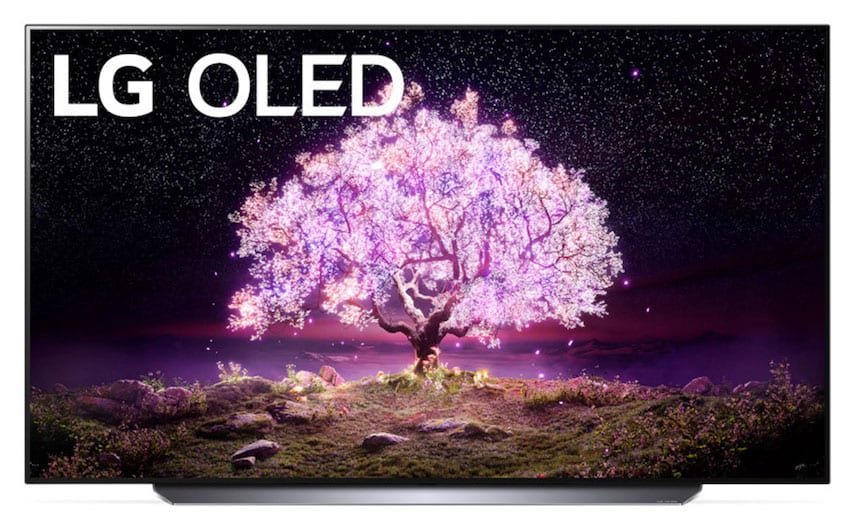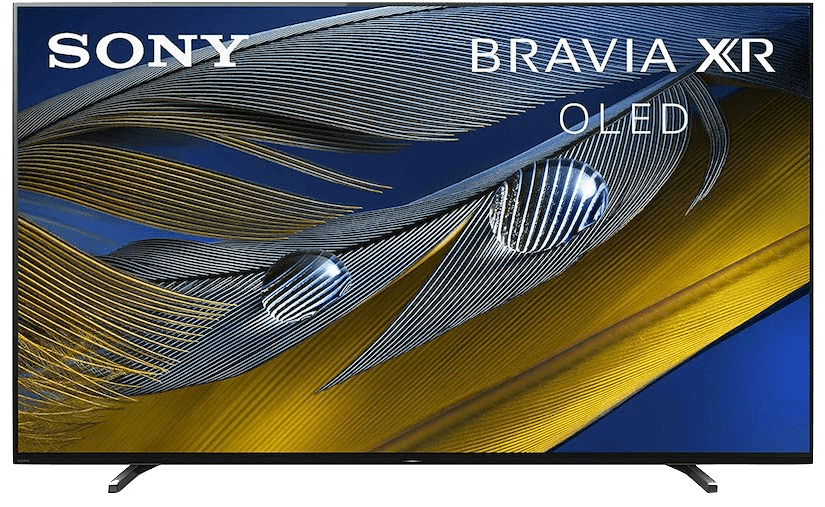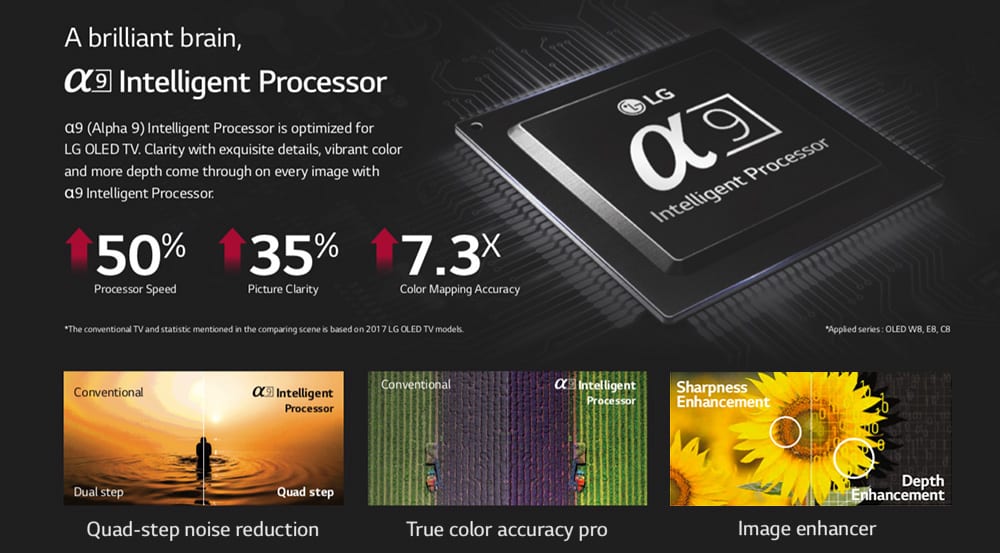When choosing a new TV, you will probably see labels such as LED, OLED, HD, 4K, HDR, etc. Although the world of television looks better every day, sometimes we can’t keep up with new innovations. That is why we have prepared this guide in which we compare two outstanding TV models, the LG C1 vs Sony A80J.
LG C1 vs Sony A80J – Quick Comparison
LG and Sony have always been synonyms for quality. If you choose either of these brands you can be sure you’re making a solid purchase. However, if you want a suitable TV, you can’t just rely on a company with a good reputation. You need to read specifications and pay attention to TV components and features.
To save your time, we are going to do it for you. Start your search by looking at the table below. Here you can find all of the essential aspects you need to know when buying a TV. This particular comparison can help you choose between the LG C1 or Sony A80J.
| LG C1 | Sony A80J | |
|---|---|---|
| Screen sizes | 48, 55, 65, 77, 83 inches | 55, 65, 77 inches |
| Screen panel | OLED | OLED |
| Processor | α9 Gen4 AI Processor 4K | Cognitive Processor XR |
| Operating system | webOS 6.0 Smart TV | Google TV 10 |
| Refresh rate | 120 Hz | 120 Hz |
| Variable refresh rate | Yes | No |
| Resolution | 3840×2160 | 3840×2160 |
| Contrast ratio | infinite :1 | infinite :1 |
| HDMI ports | 4 (HDMI 2.1) | 4 (2x HDMI 2.1, 2x HDMI 2.0) |
| USB ports | 3 (USB 2.0) | 3 (2x USB 2.0, 1x USB 3.0) |
| WiFi and Bluetooth | Yes | Yes |
| Speakers | 40 Watts | 30 Watts |
| HDR 10 | Yes | Yes |
| HDR 10+ | No | No |
LG C1

Pros:
- Fantastic choice for gaming (variable refresh rate)
- Lots of HDMI 2.1 ports
- Fantastic motion and reflection handling
- Great viewing angles
Cons:
- Subpar sound quality
- Some colors can be off
Sony A80J

Pros:
- Great image processor
- Outstanding sound quality
- Smooth and easy-to-use operating system
- USB 3.0 port
Cons:
- No variable refresh rate
- Not the best choice for gaming
LG C1 vs Sony A80J – Features Face to Face
Panel Technology
OLED is short for an organic light-emitting diode. Basically, it is a white pixel in front of which you have color filters that emit light.
Today, people often debate which technology is better, IPS vs VA. However, OLED is a much better technology than IPS or VA, especially regarding color accuracy and intensity.
VA panels suffer from poor viewing angles, while IPS TVs have poor contrast. OLED TVs do not have any of these problems. Both models in this LG C1 vs Sony A80J comparison have OLED panels.
Winner: Draw
Image Processor
Which processor is better, the α9 Gen4 AI 4K or Cognitive XR? According to the manufacturer, all 2021 LG TV models have the α9 Gen4 AI 4K. This processor version brings some updates when it comes to upscaling images.

For instance, the α9 Gen4 AI 4K processor analyzes video content frame by frame to deliver an outstanding image quality. In other words, the image is sharper, and the colors are vivid.
However, there is no significant difference compared to the Cognitive XR processor. This processor has almost the same features we mentioned above. The only difference is how this processor does it.
Sony’s Cognitive XR processor divides the screen into zones and allows objects from the zones to communicate with each other. As a result, the image is clearer, while contrast and motions are significantly improved.
Winner: Draw
Motion Technology
Motion technology is a crucial technology when determining image quality. For instance, you can have vivid colors and a sharp image, but if TV objects flicker in fast movements, your viewing experience might be poor. That is why you should consider buying a TV with a high refresh rate.
Simply put, a refresh rate indicates how many pictures your TV can show per second. The higher the number, the better motion handling.
Most TVs on the market have a 60Hz or 120Hz refresh rate. However, by today’s standards, a refresh rate of 120 Hz can be great for watching movies or playing games. Of course, the picture quality also depends on other TV components.
The good news is that both TVs in this comparison have a refresh rate of 120 Hz. But, the LG C1 has a slight advantage since it has a variable refresh rate which is crucial for gaming. So, if you are a true gamer, the LG model might be an excellent TV for you!
Winner: LG C1
Picture Quality
One of the first numbers you will see when buying a new TV, right after the screen size and price, is the resolution. There is no significant difference between the LG C1 and Sony A80J regarding screen resolutions.
Both TVs support the same resolution, 4K or Ultra HD. 4K refers to the same resolution – 3840×2160. On these TVs, you can watch HD content and Ultra HD content.
As you can see in the table below, both TVs support a vast range of TV resolutions. Most importantly, you can see how each TV interacts with different refresh rates. In that case, the LG C1 has an advantage since the A80J doesn’t support 1440p at a 120Hz refresh rate.
| Resolution | LG C1 | Sony A80J |
|---|---|---|
| 4K/120Hz | Yes (native support) | Yes (native support) |
| 4K/60Hz/4:4:4 | Yes | Yes |
| 4K/60Hz | Yes | Yes |
| 1440p/120Hz | Yes | No |
| 1440p/60Hz | Yes (forced resolution) | Yes (forced resolution) |
| 1080p/120Hz | Yes (native support) | Yes (native support) |
| 1080p/60Hz/4:4:4 | Yes | Yes |
Contrast Ratio / Black Level
The contrast ratio measures correlation between black and white. For example, a 3000:1 contrast ratio means that your TV can emit white color three thousand times brighter than its black.
OLED technology brings impressive results here. As we said earlier, OLED panels can turn off their pixels. This way, you get perfect deep black without backlighting.
So, both TVs in this comparison have an infinite :1 contrast ratio. In other words, black levels are outstanding, especially if you want to watch movies in dark environments.
Winner: Draw
Local Dimming
The main goal of the local dimming feature is to improve black levels on your TV. This functionally is not necessary since both TVs have OLED panels in this particular case. As we mentioned earlier, OLED panels don’t use backlighting. Therefore, the LG C1 and Sony A80J don’t have a local dimming feature.
Winner: Draw
Peak Brightness
Examining SDR and HDR content is crucial when comparing peak brightness between different TV models. In terms of SDR brightness, these two TVs have almost identical results. The LG C1 has a real scene peak brightness of 302 nits. The Sony A80J hits a slightly lower number, 298 nits.
Without calibration, both TVs have good HDR brightness. However, the numbers highlight their differences. The LG C1 is slightly better because it has a real scene highlight of 628 nits while the Sony TV has 593 nits.
Winner: LG C1
Color
The Sony A80J model has a fantastic color gamut, but the LG C1 has a good one but struggles with some colors. Both models have a good color volume and produce darker colors very well. However, since these are OLED TVs, they can have problems with lighter shades.
Both TVs might experience some banding when it comes to green and gray color. Either way, you can use the Smooth Gradation option to help you with banding, but you might lose some fine details if you turn it on.
Even though these TVs produce pretty similar colors, the Sony A80J model is better.
Winner: Sony A80J
Viewing Angle
OLED panels are a great choice if you want to watch a TV with several people. A TV with wide viewing angles allows you to have the same image quality at any angle.
Here is why you should opt for an OLED TV instead of other panels such as VA. The VA panel does not show the same image quality at different angles in the picture below. As you can see, the main problems are color washout and brightness loss as the angles increase.

The LG C1 and the Sony A80J have good viewing angles by default. However, color washout and brightness loss are minimal on the LG C1 model. That is why this TV is a clear winner in this segment.
Winner: LG C1
Reflection Handling
The most common mistake we make is placing our TV near the window. Reflections can ruin our entire watching experience. However, some manufacturers found a way to overcome this problem. In this case, the LG C1 models have excellent reflection handling.
On the other hand, placing the Sony A80J towards a window would not be a good idea. The visibility would be lower, especially if there was a lot of sunlight. If you want to place your TV wherever you want, the LG C1 might be a better choice since it has superb reflection handling.
Winner: LG C1
Sound Quality
The LG C1 has 40 Watts speakers and 2.2 channels. The Sony A80J comes with 30 Watts speakers and 2.2 channels. Both support Dolby Atmos and Dolby Digital and have no integrated soundbar.
At first glance, you might think that the LG model offers better sound quality. But, that is not true, and there are a couple of reasons. The LG C1 lacks bass and it doesn’t support DTS.
As expected, the Sony A80J delivers excellent sound quality without a soundbar. Even the screen on this TV model is used as a speaker!
Unlike the LG model, it supports DTS and has acoustic auto-calibration. For example, the TV detects where you sit, adjusting to the best possible sound for you. To conclude, the LG C1 has good sound, but it can’t compare to the Sony A80J sound quality.
Winner: Sony A80J
Smart TV Platform (Operating System)
The LG C1 comes with the new WebOS 6.0. This system provides a smart hub that makes apps and widgets easier. It has a beautiful design and contains the most popular apps for streaming content like Netflix or Amazon Prime.
The Sony A80J comes with the Google TV 10, which runs smoothly. It supports numerous streaming services and a wide selection of apps. Google TV provides a vast selection of TV shows, movies, and other content.
| OS Features | LG C1 | Sony A80J |
|---|---|---|
| OS Version | WebOS 6.0 | Google TV 10 |
| Ease of Use | Easy | Average |
| Smoothness | Average | Very Smooth |
| Time to Change Backlight | 6 s | 2 s |
| Time to Load YouTube | 2 s | 2 s |
Connectivity
Inputs
The LG C1 TV is a fantastic choice for gaming because it has FreeSync, a variable refresh rate, and plenty of HDMI 2.1 ports. You can use up to four HDMI 2.1 ports and three USB 2.0 ports on this TV.
| LG C1 | Sony A80J | |
|---|---|---|
| HDMI ports | 4 (HDMI 2.1) | 4 (2x HDMI 2.1, 2x HDMI 2.0) |
| USB ports | 3 (USB 2.0) | 3 (2x USB 2.0, 1x USB 3.0) |
| Audio Jack | Yes | Yes |
| Optical audio out | Yes | Yes |
The Sony A80J model also has four HDMI ports, but only two support HDMI 2.1. However, one of its three USB ports supports USB 3.0.
These TVs have an ethernet port, digital optical audio out, and a headphone jack. But, having numerous HDMI 2.1 ports is making the difference. Therefore, the LG C1 prevails in this segment.
Winner: LG C1
Voice Assistants
Both of these models come with Google Assistant integrated. However, only the LG C1 comes with integrated Amazon Alexa. But, the Sony A80J is Alexa compatible. Each of these you can use via the remote’s built-in mic.
The LG C1 has a fantastic Magic Remote. It comes with a scroll wheel which makes it very easy to use. You can access both of the voice assistants through the dedicated buttons. This way, you can effortlessly search the content and open apps. The remote has shortcut keys to streaming services like Netflix, Amazon Prime Video, and Disney+.
The Sony A80J also has a sleek-looking remote. You can use voice controls via a dedicated Google Assistant button. So, you can easily search the apps, change settings or adjust the volume. Also, you have shortcuts to streaming services just like LG’s Magic Remote.
Winner: LG C1
Wireless technologies
Both of these models support the WiFi connection, 2.4 GHz and 5 GHz. However, there are other wireless technologies you can use. If you wonder if smart TVs have Bluetooth, the answer is yes. Many smart TVs come with a built-in Bluetooth function.
That is exactly the case with these two models in this article. The LG C1 supports Bluetooth 5.0, and the Sony A80J supports Bluetooth 4.2. The main difference between these two Bluetooth versions is in their speeds. Bluetooth 5 transmits data at 2 Mbps, while Bluetooth 4.2 can reach a maximum of 1 Mbps.
For instance, if you want to connect multiple Bluetooth speakers to a TV, the LG C1 model might be a better choice since it allows fast transfer speeds.
Winner: LG C1
Conclusion
At the end of this LG C1 vs Sony A80J comparison, we’ve included a summary, so you can find out which TV is the best option for you.
Choose the LG C1 model if you:
- Intend to play a lot of games
- Have a wide seating arrangement
- Want to enjoy 4K resolution at high refresh rates
- Need a smooth Smart TV operating system
Choose the Sony A80J model if you:
- Appreciate the fantastic sound quality
- Like vivid colors
- Plan to watch a lot of movies
- Want a strong image processor